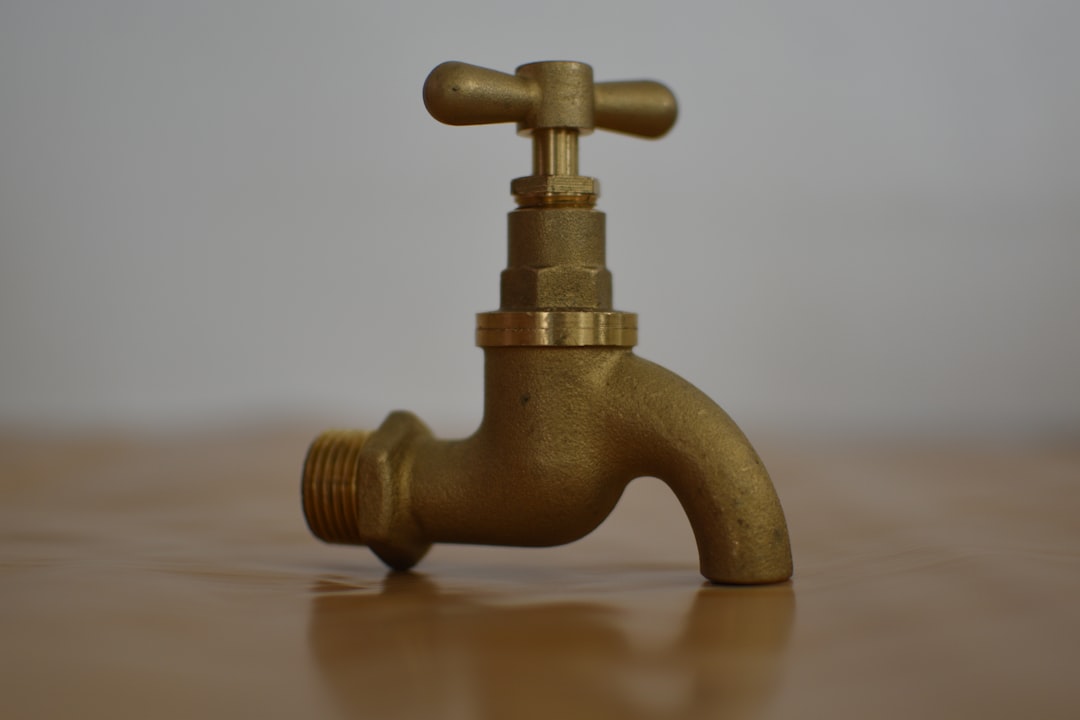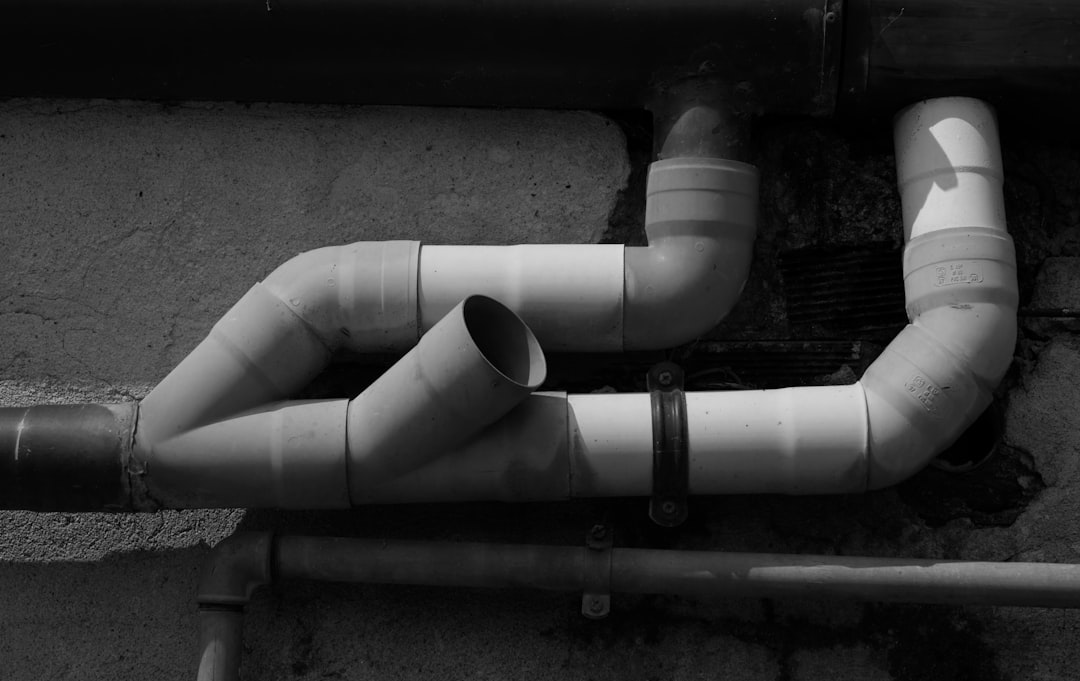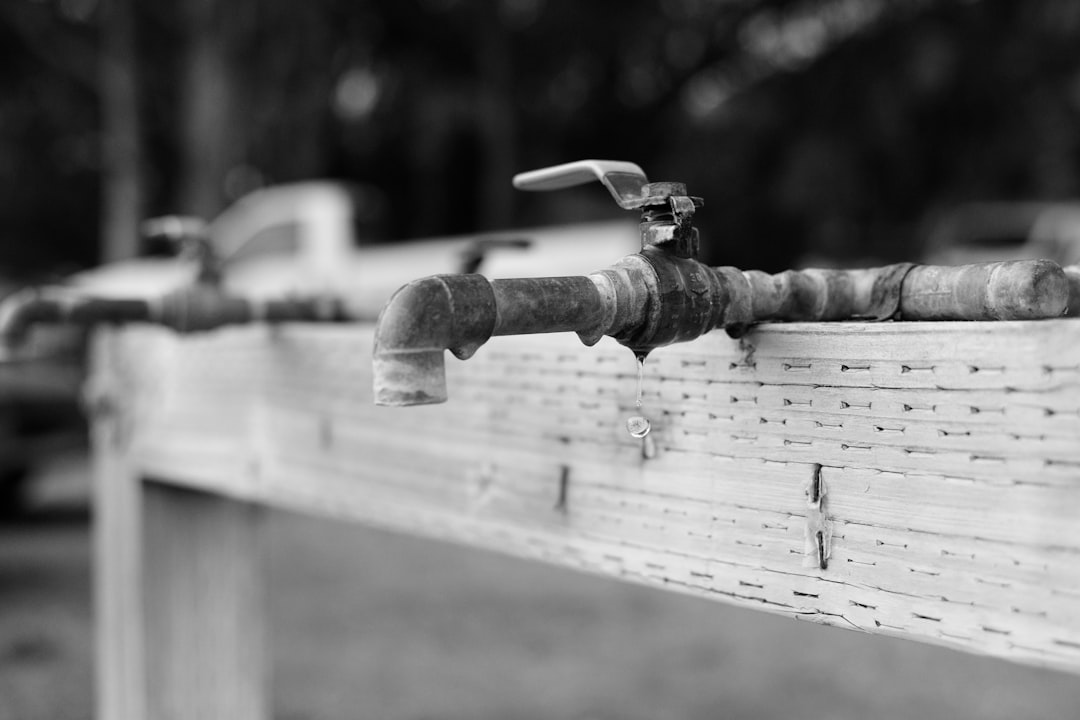

Engage prospects with a scan and streamline customer engagement with FREE QR code marketing tools by Sona – no strings attached!
Create a Free QR CodeFree consultation

No commitment

Engage prospects with a scan and streamline customer engagement with FREE QR code marketing tools by Sona – no strings attached!
Create a Free QR CodeFree consultation

No commitment
Wholesale plumbing supply companies face a rapidly evolving marketplace shaped by increasing customer expectations, complex supply chain demands, and rising competition from both local distributors and online plumbing supply companies. Teams often encounter missed sales opportunities, fragmented data, and gaps in customer engagement, especially when analog processes prevent visibility into high-value buyer activity or intent.
Today’s wholesale plumbing supply leaders are integrating digital tools not just in their online operations, but at every offline touchpoint along the customer journey. QR codes have emerged as an effective bridge, connecting physical products, catalogs, and signage to actionable online experiences such as ordering, product reviews, or real-time support. This connectivity helps companies sidestep pitfalls like lost interest from untracked prospects, slow manual workflows, or incomplete account insights. The result is accelerated inventory turns, strengthened customer relationships, and measurable marketing investments.
This guide explores how wholesale plumbing supply companies can harness QR codes to streamline analog workflows, drive more effective marketing, and gain measurable insights. The goal is to enable seamless access between offline and online worlds, uncover missed demand, and build a foundation for responsive, data-driven growth that benefits both customers and internal teams.

QR codes create direct connections between analog and digital processes, smoothing workflow bottlenecks and eliminating engagement blind spots that cost companies valuable opportunities. Many distributors discover that high-value prospects research offerings or visit showrooms without registering interest, which leaves sales and marketing teams in the dark and makes attribution difficult. See single vs multi-touch attribution models.
To capture that value, focus on streamlining key moments in the buyer and account lifecycle, from discovery to reorder. QR codes can service both new and established accounts, making it easy to self-serve, request help, or trigger workflows during branch visits, at job sites, and after deliveries. When combined with CRM integrations and automation via Sona QR’s product overview, scans can populate lead records, notify account managers, or enroll customers in targeted nurture sequences based on real behavior, not assumptions.
For example, instead of relying solely on in-branch reps to catch every lead, a QR code on a counter display can send buyers directly to an express checkout for common items, unlock targeted discounts that require contact capture, or enable instant account verification. Workflow automation can then sync these signals to your CRM and marketing tools, closing attribution gaps and ensuring hot prospects receive timely follow-up from the right seller or service team.

Traditional tactics such as printed catalogs, packaging inserts, and in-person trade shows often create unmeasured or anonymous engagement. Contractors may read your flyer, snap a quick photo of a SKU, or grab a spec sheet without ever making themselves known. This invisible interest means attribution, forecasting, and follow-up suffer, which can ultimately slow revenue growth and reduce the return on physical marketing investments. For related field applications, see QR codes for contractors.
QR codes provide a streamlined, app-free way for customers to jump from physical touchpoints to digital action. Sona QR lets wholesale companies update destinations instantly, so codes on labels or counter signs always lead to live spec sheets, install guides, or current promos. Every scan generates actionable data: the timing, location, channel, and context. These insights close the gap between offline marketing and digital attribution, allowing teams to respond in real time with the most relevant next step.
Consider invoices and appointment cards: a QR code can link to a pre-filled payment portal, warranty lookup, or reorder page with the job’s parts list. This reduces late payments and increases convenience for field teams, while capturing signals that finance, sales, and operations can use to prioritize outreach and replenish stock more accurately. For a broader view, see QR codes in wholesale.

Selecting the right QR format is critical to building a reliable bridge between real-world engagement and digital action. Without centralized management, codes can quickly become outdated or disconnected, which leads to missed follow-up and inaccurate targeting. Use a small set of formats mapped to specific outcomes so every scan advances the journey.
By consolidating QR creation and management on a single platform, companies keep destinations current, minimize wasted effort on outdated collateral, and streamline onboarding or retargeting. A platform like Sona QR lets you generate multiple formats, manage versions, and track performance from one dashboard, ensuring every code remains accurate and actionable as your offers and inventory change.

Growth often hides in analog interactions that reveal purchase intent yet are not captured digitally. Contractors who price a project at the counter may not leave contact info, and busy installers may forget to reorder a part after a job is complete. QR codes let you instrument these moments so the business can respond with precision.
Strategically place QR codes where intent is strongest and where data is typically lost. Aim for placements that both serve the customer and generate a useful signal for your team. When done right, each scan either reduces friction, advances a sale, or informs smarter planning.
These optimizations help companies recover opportunities lost to anonymous activity, build richer customer profiles, and connect offline interactions to digital nurturing flows. Over time, scan data reveals which branches, product lines, and seasonal campaigns drive the most revenue so you can reallocate spend toward proven winners.

Use cases should align with real workflows your customers already follow. Focus on moments that are frequent, time-sensitive, or critical to customer satisfaction. Each of the examples below turns an analog process into a digital signal and a measurable outcome.
Each of these cases transforms invisible interactions into measurable engagement. Even when scans begin as anonymous, downstream actions like form submits or payments connect the dots. Sales, marketing, and finance teams can then coordinate around shared data to prioritize outreach, forecast accurately, and invest in the channels that prove their value.
Each QR scan is a signal. By deploying codes across brochures, counters, trucks, and packaging, you can segment audiences automatically and fuel precise retargeting and follow-up campaigns. This approach ensures that top-fit prospects do not slip through the cracks simply because they never filled out a form at the counter. See intent-driven retargeting for tactical steps.
Start by designing a segmentation plan that mirrors your funnel and your customer types. For wholesale plumbing supply companies, relevant distinctions often include contractor segment, project type, branch location, and lifecycle stage. Use dynamic QR codes so you can adjust destinations and tags over time as goals evolve.
With Sona QR, each code becomes a smart entry point into your funnel. Over time, these audiences refine themselves as scan behavior, follow-up actions, and purchase history accumulate, enabling more relevant offers such as bulk-buy bundles for repeat installers or training invites for teams who repeatedly scan technical content.
QR codes are more than a convenience. They act as connective tissue across offline and digital campaigns, enabling real-time engagement and richer data collection. When integrated consistently, they reveal how different touchpoints build momentum, from the first impression to reorder loyalty.
Focus on the channels where your physical presence is strongest and where your audience already interacts with your brand. For wholesale plumbing supply companies, that often means branch environments, printed collateral, trade events, delivery operations, and local plumbing advertising near job clusters.
A unified QR measurement strategy closes the loop. With a centralized platform such as Sona QR, you can manage all codes, monitor performance in one dashboard, and sync scan data to your CRM and ad tools. This visibility helps marketing and operations coordinate efforts, from staffing a counter during peak scan hours to prioritizing stock for products that surge in engagement.
Clarify what you want to achieve so you can design a QR journey that is simple, relevant, and measurable. Typical objectives include surfacing high-value leads who do not submit forms, speeding up repetitive orders for common SKUs, reducing churn by promoting engagement at critical milestones, or improving cash flow by streamlining payment.
Tie each objective to a clear outcome and baseline. For example, aim to cut average quote turnaround by 30 percent, raise reorder conversions from packaging by 15 percent, or reduce days sales outstanding by five days over a quarter. When everyone agrees on the target, it is easier to assemble the right placements, content, and follow-up automation.
Match the code format to the job to be done. Static codes work for fixed destinations that never change, such as a downloadable branch map. Dynamic QR codes are better for campaigns, products, and workflows that evolve, since they let you update destinations and measure performance without reprinting.
For most revenue-critical use cases, choose dynamic codes. They allow retargeting, A/B testing, and content iteration. For example, one dynamic code on a shelf talker can cycle through monthly promotions. If you discover that certain CTAs outperform others, update the destination instantly and keep the physical asset in place.
Make your codes visible, trustworthy, and easy to scan. Use brand colors, add a subtle logo, and place a clear call to action next to each code. Write CTAs that speak to the immediate benefit and context, such as Scan for live inventory, Scan to pay now, or Scan for compatible parts.
Test scannability across devices, distances, and lighting conditions that mirror actual usage. Warehouse lighting, glossy packaging, outdoor signage, and moving vehicles can all affect performance. Validate the experience from end to end: does the landing page load fast on cellular data, does it auto-detect branch location, and is the form short enough to complete with gloves on?
Roll out codes where manual processes commonly break down: at delivery, checkout, onboarding, support requests, and trade events. Prioritize locations where your audience already looks for help or information. On invoices, emphasize payment or claim redemption. On bin labels, emphasize instant reorder and compatibility guides. On counter displays, emphasize express checkout and loyalty sign-up.
Pilot first across a subset of branches or product lines. Compare scan rates, conversions, and downstream revenue against control groups. Use what you learn to tune placement, CTA, and destination logic before scaling. Involve branch staff early so they understand how to promote scanning and field common customer questions.
Treat your QR program as a living system. Set up dashboards to track scans by time, location, device, and campaign source. Monitor conversion metrics like contact capture rate, reorder rate, quote requests, payments completed, and revenue influenced. If you see drop-offs, adjust content, CTAs, or page speed and retest.
Build an experimentation cadence. A/B test landing pages, offers, and CTA language, then standardize what works. Feed results into your CRM to improve lead scoring and prioritization. Over time, pair scan activity with account health indicators to predict churn risk and identify upsell moments.
A recurring pain point for wholesale plumbing supply companies is the inability to link anonymous engagement and offline inquiries to revenue. Staff often cannot distinguish between casual traffic and serious buyers, which makes marketing attribution and pipeline forecasting risky. As a result, high-value deals can fall through the cracks because no one saw the signal early enough.
Centralized QR analytics solve this by tracking scan origin, mapping scans to accounts, and syncing data with your CRM and marketing tools. Technology now makes it possible to connect previously anonymous actions such as viewing spec sheets or accessing support guides to pipeline activity. This enables timely and relevant follow-up based on demonstrated interest and improves offline attribution.
With Sona QR and Sona.com, you can track every scan, measure engagement by channel and context, respond in real time, and sync with your CRM to attribute revenue. These tools transform fragmented touchpoints into a connected buyer journey that spans the first scan through to conversion and reorder. The result is a closed-loop system where field operations, marketing, and sales work from the same insights to prioritize the next best action.
Expanding QR adoption requires a balance of operational discipline and on-the-ground creativity. Start with the placements and messages that mirror your customers’ day-to-day work, then standardize what proves effective. Equip staff with talking points so they can promote scanning and explain the benefit in under ten seconds.
Creative deployments can add momentum. A QR on pallet wrap can deliver a seasonal promo and capture project type, informing future bundle recommendations. A loyalty card with a QR can log points for reorders and unlock tiered discounts. Labels on rental tools can connect to safety checklists and replacement parts, reducing downtime and surfacing upsell signals.
Embracing QR codes is a strategic step for wholesale plumbing supply companies seeking to recover lost opportunities, bridge historical visibility gaps, and transform offline interactions into accountable, data-driven growth. By surfacing buyer signals in the moments they occur, enabling seamless hand-offs between analog and digital channels, and boosting engagement from ordering to upselling, dynamic QR strategies help teams operate with greater responsiveness and competitive agility.
QR codes are more than a shortcut. They are a strategy that turns every physical surface into a digital entry point and every moment of curiosity into a measurable step forward. For wholesale plumbing supply businesses, the benefits compound as you instrument more of the journey: from showroom to shelf, from truck to job site, from invoice to payment.
Here is what they deliver when executed well:
With Sona QR, you can generate and manage codes, monitor performance, and sync scan data with your CRM. With Sona.com, you can connect those scans to pipeline and revenue through attribution and identity resolution. Start with one or two high-impact use cases, prove quick wins, and scale your QR program across the touchpoints that matter most to your customers. In a competitive market where every opportunity counts, turning offline intent into online action is an advantage you can measure and grow. Start creating QR codes for free.
QR codes have transformed wholesale plumbing supply companies from traditional inventory and sales models into dynamic, data-driven growth engines. By enabling instant access to detailed product information, order tracking, and exclusive promotions, QR codes streamline operations while enhancing customer convenience and trust. Imagine empowering contractors and retailers to scan codes on the spot and immediately access specs, availability, or reorder options—turning every interaction into a seamless sales opportunity.
With Sona QR, you can create dynamic, trackable QR codes tailored for wholesale plumbing supply, update campaigns instantly without reprinting costly materials, and link every scan to real-time sales insights. This means no missed leads, faster order cycles, and a measurable boost in customer satisfaction. Start for free with Sona QR today and transform your plumbing supply business by turning every scan into a stronger connection and increased revenue.
The article does not list specific companies, but suggests evaluating local distributors and online suppliers based on digital integration and customer engagement capabilities.
Choose companies that integrate digital tools across offline and online touchpoints, use QR codes for seamless customer engagement, offer measurable marketing insights, and support efficient inventory and order workflows.
QR codes connect physical products to digital experiences, reduce manual workflows, enable real-time support, improve lead capture, enhance inventory management, and provide measurable marketing attribution.
Use QR codes on product packaging, bin labels, and delivery documents to enable instant reorder, track stock levels, and integrate scan data with CRM and operations for accurate replenishment.
Integrating QR codes across brochures, direct mail, trade shows, product packaging, and out-of-home signage to create measurable, interactive campaigns that connect offline and online customer journeys.
Deploy dynamic QR codes with analytics platforms to monitor scan rates, locations, conversion metrics, and integrate data with CRM systems for attribution and performance optimization.
Use QR codes to digitize inventory signals, place codes on bin labels and warehouse signage, enable quick stock reporting, automate reorder workflows, and analyze scan data to prioritize restocking.
Leverage QR codes on delivery vehicles, direct mailers, trade show materials, and digital campaigns to capture location-based data and drive traffic to the nearest branches or online portals.
Use QR codes on fleet vehicles, job site signage, loyalty cards, rental tool labels, and printed collateral to create interactive experiences that drive engagement and track customer behavior.
Use Sona QR's trackable codes to improve customer acquisition and engagement today.
Create Your FREE Trackable QR Code in SecondsJoin results-focused teams combining Sona Platform automation with advanced Google Ads strategies to scale lead generation

Connect your existing CRM

Free Account Enrichment

No setup fees
No commitment required

Free consultation

Get a custom Google Ads roadmap for your business






Launch campaigns that generate qualified leads in 30 days or less.
